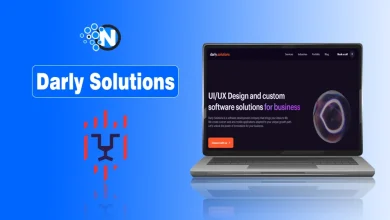Essential Tips for Maintaining Transparency When Implementing Employee Tracking Software

When you introduce employee tracking software, the first thing on your mind might be productivity. But the truth is, “Transparency is just as critical.”
If you install tracking tools without clarity, you will probably lose trust instead of gaining performance. I have seen businesses crash team morale just by skipping this one essential step, the open communication.
In this blog post, I will guide you through everything I have learned about maintaining transparency with employee tracking software. I will also share how to do it respectfully so that your team feels supported, not surveilled. Let’s get into how to get this balance right.
12 Tips to Maintain Transparency When Implementing Employee Tracking Software
In the under section, I have mentioned the key tips for maintaining transparency when implementing employee tracking software.
1. Understanding Employee Tracking Software
Employee monitoring software keeps a log of how employees use applications, what websites they access, every keystroke they type, and their general productivity. Managers can identify what is holding up projects, track how the project is advancing, and learn about employee activities during their working hours.
Nowadays, tracking tools allow managers to record and review work on screens, review emails, and watch activity in real time to guide daily work. Still, if organizations do not manage these capabilities wisely and honestly, employees may feel very anxious.
2. Explaining Your Implementation Strategy
Explaining the reasons for introducing monitoring software helps employees be more understanding. You should give your team genuine explanations about business reasons for the change, such as making projects easier, protecting data, or meeting compliance requirements.
Avoid using buzzwords and concentrate on the real advantages that staff will enjoy. When employees realize these tools support fair treatment, skills improvement, opportunities, and performance recognition, they view these tools as supportive rather than punitive.
3. Making Employees Part of the Decision Process
Including employees in software selection and policy development creates buy-in while addressing concerns before implementation begins. Therefore, it is advisable to form committees with representatives from various departments to review monitoring options and provide policy input.
This collaborative approach reveals practical issues managers might miss. Employees highlight potential workflow disruptions, suggest useful features, or identify privacy concerns requiring policy attention. When team members help shape monitoring practices, they become advocates rather than opponents of new systems.
4. Respecting Employee Privacy
Effective monitoring policies clearly separate work-related activities from personal privacy boundaries. Employees must know exactly what gets tracked, when monitoring occurs, and what information remains completely private.
Implement focused monitoring that targets work-related software while ignoring personal applications during breaks. Consider time-based tracking limited to work hours, protecting employee privacy during lunch breaks or after-hours personal tasks.
5. Setting Clear Written Policies
Comprehensive written policies eliminate confusion and provide employees with clear expectations about monitoring practices. Documentation should cover data collection methods, storage procedures, access permissions, and retention schedules with specific timeframes.
Include concrete examples showing how monitoring data will and won’t influence employment decisions. Employees need clarity about whether tracking information affects performance reviews, disciplinary actions, or promotion opportunities within your organization.
6. Giving Access to Personal Data
Transparency means giving employees access to their own monitoring information. When people review their activity reports, they gain valuable insights into work patterns and identify improvement opportunities independently without management pressure.
This data access builds trust by demonstrating you’re not hiding information or using metrics unfairly across different employees. Workers who see their own statistics are more likely to trust system’s fairness and consistent application throughout the organization.
7. Providing Training and Support
Proper training reduces anxiety in workplace environments and helps employees understand monitoring tools practically. Walk teams through software interfaces, explain data collection processes, and demonstrate how they access personal information.
Address common employee concerns during training sessions and provide ongoing support for questions arising after implementation. When workers understand monitoring mechanics, they worry less about unfair treatment or privacy violations.
8. Monitoring with a Clear Purpose
Every monitoring activity requires a clear business justification that employees can understand and support. Whether tracking productivity metrics, ensuring security compliance, or gathering process improvement data, your team should understand why this information matters for business success.
Resist tracking everything simply because technology allows it. Focus on metrics directly supporting business goals and employee development while avoiding unnecessary data collection that increases privacy concerns without providing actionable insights.
9. Regular Policy Review and Updates
Monitoring policies should evolve with changing business needs and employee feedback over time. Schedule quarterly or annual reviews, assessing whether current practices work effectively while addressing emerging concerns or suggestions.
Include employee representatives in review sessions, gathering honest feedback about monitoring experiences. Their insights help identify policy improvements or training opportunities, making systems work better for everyone involved in daily operations.
10. Developing a Culture of Mutual Trust
Trust develops through consistent actions over time, not just written policy statements. Demonstrate commitment to fair monitoring by using data constructively while avoiding punitive actions based solely on tracking metrics without additional context.
Recognize positive performance insights revealed through monitoring data. When employees see that tracking information leads to recognition, better resource allocation, or process improvements rather than punishment, they embrace these tools more readily.
11. Balancing Transparency with Security Requirements
While transparency remains crucial, some monitoring details may require confidentiality for legitimate security reasons. Be honest about this balance with employees while protecting sensitive information that could compromise security measures.
Explain that certain monitoring practices exist for everyone’s protection without revealing technical details that could be exploited. Employees understand security monitoring without knowing specific intrusion detection system mechanics.
12. Continuous Feedback and Evolution
Regular feedback collection helps understand how monitoring practices affect employee experience while identifying improvement opportunities. Use anonymous surveys, focus groups, or individual conversations to gather honest input about monitoring tools and policies.
Pay attention to both positive feedback and legitimate concerns. Employees can appreciate certain features while finding others intrusive or unhelpful for their specific roles. This detailed feedback helps refine approaches over time.
Final Thoughts
Implementing employee tracking software successfully demands ongoing commitment to transparency, open communication, and genuine respect for employee concerns. Employee tracking doesn’t have to feel like surveillance. If you lead with transparency, the entire process becomes more collaborative, not combative.
The key is to stay human, talk openly, answer questions, and make your decisions with your team, not just for them. I have seen firsthand how a transparent approach transforms workplace culture, even when tracking tools are involved. So don’t shy away from the conversation. Embrace it.
Because when people feel seen and respected, they’ll show up with more trust, more clarity, and more purpose.




